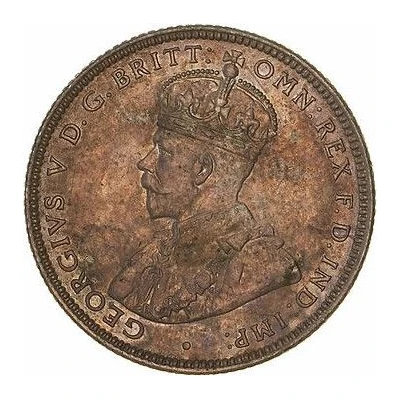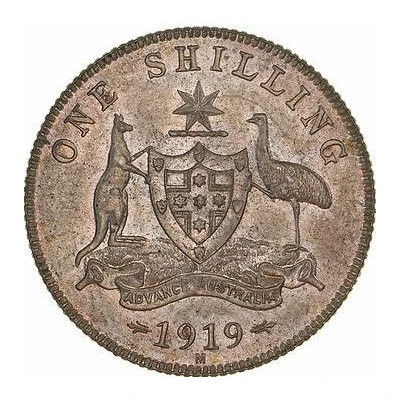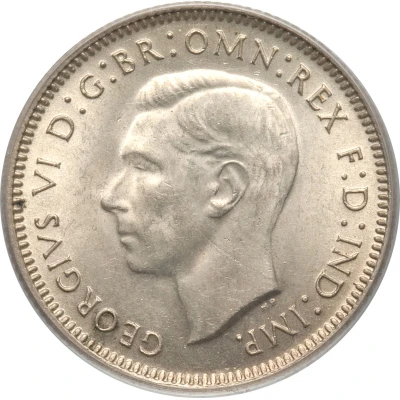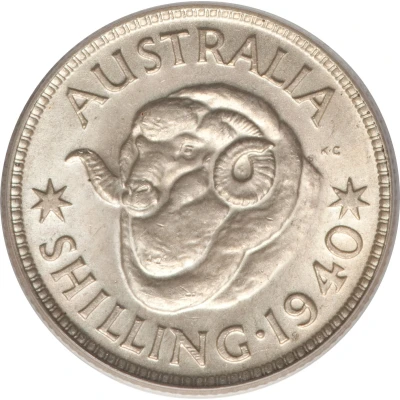
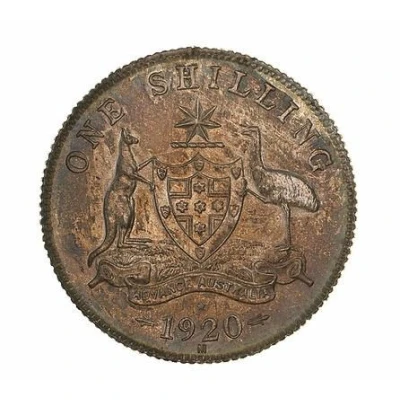

1 Shilling - George V 1920 Debased Pattern
1920 year| Silver (.500) | 5.65 g | 23.5 mm |
| Issuer | Australia |
|---|---|
| King | George V (1910-1936) |
| Type | Pattern |
| Year | 1920 |
| Value | 1 Shilling (1⁄20) |
| Currency | Pound (1788-1966) |
| Composition | Silver (.500) |
| Weight | 5.65 g |
| Diameter | 23.5 mm |
| Shape | Round |
| Technique | Milled |
| Orientation | Medal alignment ↑↑ |
| Demonetized | Yes |
| Updated | 2024-10-04 |
| Numista | N#431523 |
|---|---|
| Rarity index | 100% |
Reverse
Coat of Arms with supporters (a Kangaroo and Emu). Lettering around of denomination and Mint mark below, date with dashes.
Script: Latin
Lettering:
ONE SHILLING
ADVANCE AUSTRALIA
-1920-
Engraver: William Henry James Blakemore
Edge
Reeded
Comment
As part of the debasements following the Great War across the British Empire in response to economic strain, debt and the rising price of silver which led to governments removing some silver from coinage. In the UK, in 1920, the silver content was lowered to 50%, in Canada, 80%, British West Africa to 50% and then to non silver, East Africa to 50% then 25%, Ceylon to 55% and the Straits Settlements to 40% . Australia was debating the reduction of silver content from 1918 on, and had new dies prepared to test coins when the decision was made. The first test strikes were in 1918, of half silver purity and two are known, with 1919 strikes in 625 fine silver and with two distinctive ‘S’ placed as a mark. in 1920, some florins were made in debased alloys as a test alongside these shillings. It is disputed what the exact debased silver alloy was but it was likely 50% and two variants are known - one with an M Mintmark and one without. In the end, by the time any decision could be made, the price of silver dropped once more and no debased coins were released into circulation (later shillings did use the star on circulation shillings as dies had already been ordered).
Interesting fact
One interesting fact about the 1920 Pattern 1 Shilling - George V (1920 Debased Pattern) from Australia is that it was minted with a unique silver composition of .500, which is significantly lower than the standard .925 sterling silver used in most silver coins. This unusual composition was a result of the economic challenges faced by Australia during World War I, which led to a shortage of silver and the need to use alternative metals in coin production. Despite its lower silver content, the coin still maintains its value and rarity among collectors.
